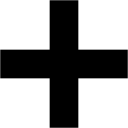It's time to talk all of my tips and tricks for a particular step in my makeup routine - a.k.a., 'Makeup 101'! If you've been following this series at all (you can easily catch up here if you fancy), you'll likely know we're now onto Cheeks and having already covered Bronzer last time, this time we're discussing the whole concept of Contouring. And what better time for this step to come in the series than during #DitsyDecember and party season? Perfect timing if you ask me...
- What actually is Contour? A makeup phenomenon mainly born out of Drag makeup and performance-based makeup but moved more into mainstream due to YouTube tutorials and social media (kinda similar to the likes of 'baking'), contour is designed to add shape to the face. Whether it be to help create the illusion of a different structure or to simply enhance what's already there naturally - it can do wonders for not only giving areas of your face more definition, but also making them appear smaller too! It's basically all about creating illusion using light and shade and much like how highlighting makes areas of the face appear more prominent, contouring makes others appear more sunken-in.
- What products do you need? Generally, for contour you really only need to find the right colour and formula for you and once you have - you're set! Typically for contour, you'd want something with an ashy, cooler undertone as that's what will help add the effect of shadow but perhaps of you're of a deeper or warmer skin-tone, you may find using something warmer (something that's perhaps more like a bronzer) may in fact work better as anything more grey-toned could simply leave a strange cast on your complexion! Formula-wise, like most makeup products these days - there are a lot of options on offer. You've got your standard powders (my personal go-to most of the time) but also creams - whether they be in stick format or in a pot. Also, don't forget you've got the option to use your usual foundation or concealer, just in an darker, contour-like colour too if available. This will not only sculpt, but add a little extra coverage at the same time!
- Where do I apply it? Now, this will really depend on both your personal preferences in how you like your makeup and also your own facial structure/shape too. Preference-wise, you may have certain areas that you want to define or make appear smaller or you may want to follow something more designed to complement your face shape, or maybe you simply want to do your own thing and in which case - you do you! Generally, you want to contour any areas that you wither want to add definition to, want to make appear smaller or make appear sunken in at all. So, that will generally be the hollows of your cheekbones, your temples/forehead, jawline and sides of your nose. I tend to apply contour to almost, if not all of these areas as I like the effect it gives but you may find that it changes for your depending on how you like you face to look or your own face shape! For example, a heart-shaped face (with a smaller chin and larger forehead) may find it better to contour your temples to even things out; and a more squire-shaped face may find contouring right at the sides of the jaw to help round out and soften your more angular jawline. If in doubt - just take a look at your face in the mirror and see what areas naturally have a shadow and go in or find out what your face shape is and go from there...
- How to apply... Personally, I always like to go in with a super light hand when I contour - no matter what product, finish or formula I'm using. Because, it's so much easier to add product than it is to take it away! Brush-wise, I really like a slightly round brush that's firm enough to apply enough product and with enough precision, but not too dense so that it doesn't apply too much colour at once and can easily buff things out in no time at all. I love a duo-fibre brush as it never picks up too much and has the flexibility to really blend everything out nicely but have a little play around and see what works best for you!
- Application time! When it comes to applying, if I'm contouring my cheeks or temples, I start right at the very back near my hairline so there's no visible gap between the two and also, the most product is concentrated at the outer edge of the face. For the jawline, I like to keep as still and 'naturally' posed as I can (as you want to make sure you're applying it where will actually do the job of shaping and shaping things up) and just use small circular motions to gently buff the colour in. For the nose, I always use a much smaller brush (like a fluffy eyeshadow brush) and take the smallest amount (sometimes I even mix it with my pressed powder to dilute it even more) and I use a really light hand to just gently sculpt the sides of my nose to make it appear thinner and also gently at the tip to make it appear shorter and more 'lifted' too.










No comments:
Post a Comment